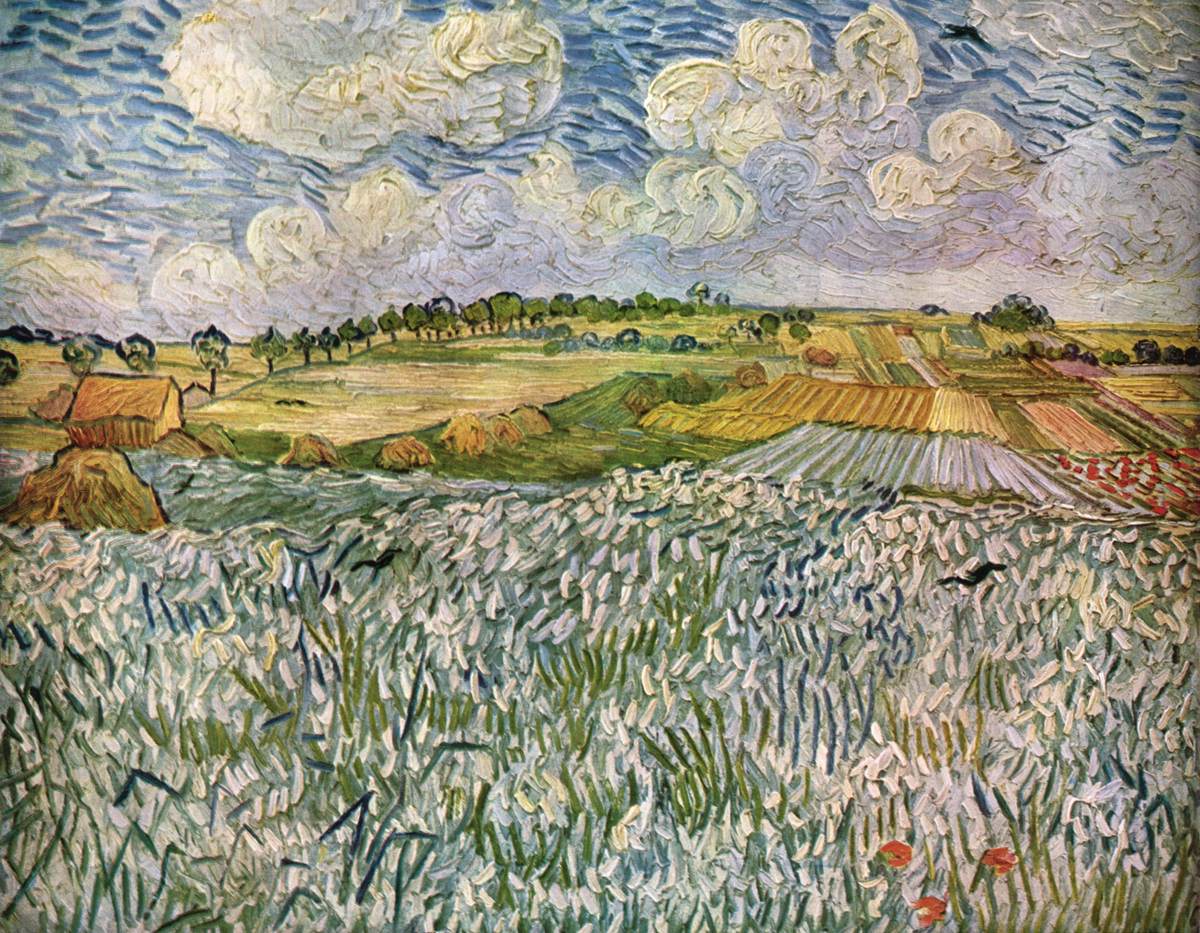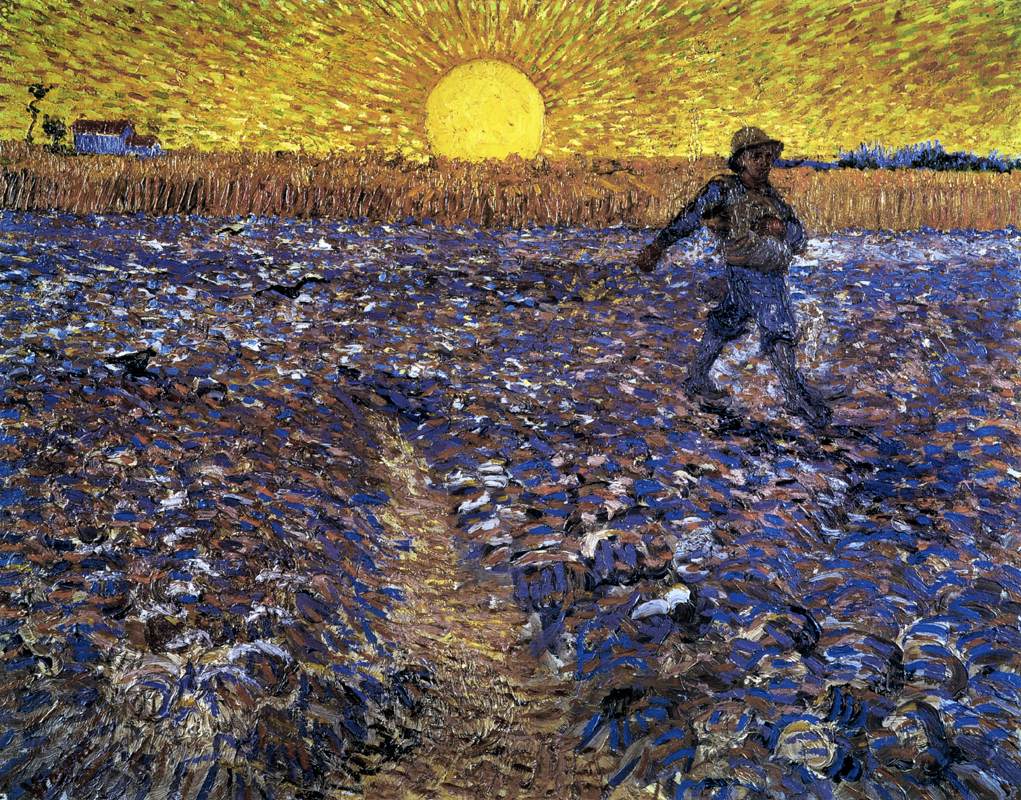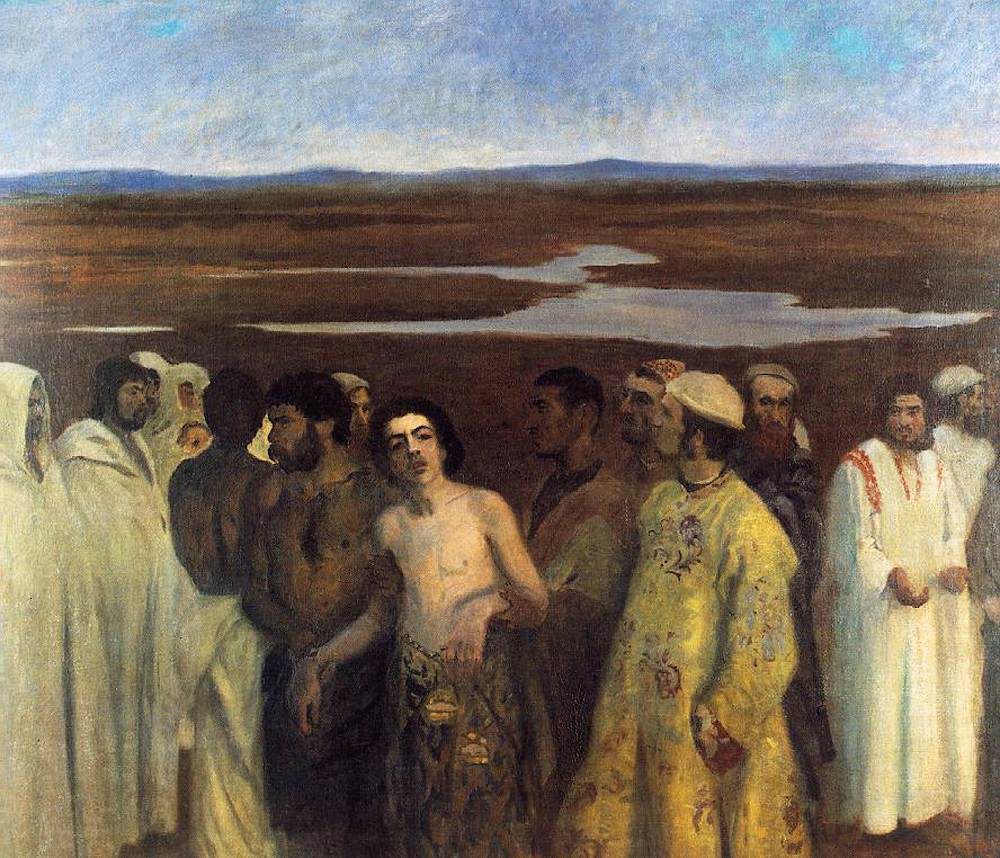‘Other seeds fell on good soil and brought forth grain.’ Sunday Reflections, 15th Sunday in Ordinary Time Year A
The Sower, Vincent van Gogh
June 1888, Arles, Rijksmuseum Kröller-Müller, Otterlo [Web Gallery of Art]
Readings (New American Bible: Philippines, USA)
Readings (Jerusalem Bible: Australia, England & Wales, India [optional], Ireland, New Zealand, Pakistan, Scotland, South Africa)
Gospel Matthew 13:1-23 (or 13:1-9) (New Revised Standard Version, Catholic Edition, Canada)
That same day Jesus went out of the house and sat beside the sea. Such great crowds gathered around him that he got into a boat and sat there, while the whole crowd stood on the beach. And he told them many things in parables, saying: “Listen! A sower went out to sow. And as he sowed, some seeds fell on the path, and the birds came and ate them up. Other seeds fell on rocky ground, where they did not have much soil, and they sprang up quickly, since they had no depth of soil. But when the sun rose, they were scorched; and since they had no root, they withered away. Other seeds fell among thorns, and the thorns grew up and choked them. Other seeds fell on good soil and brought forth grain, some a hundredfold, some sixty, some thirty. Let anyone with ears listen!”
[Then the disciples came and asked him, “Why do you speak to them in parables?” He answered, “To you it has been given to know the secrets of the kingdom of heaven, but to them it has not been given. For to those who have, more will be given, and they will have an abundance; but from those who have nothing, even what they have will be taken away. The reason I speak to them in parables is that ‘seeing they do not perceive, and hearing they do not listen, nor do they understand.’ With them indeed is fulfilled the prophecy of Isaiah that says: ‘You will indeed listen, but never understand, and you will indeed look, but never perceive. For this people’s heart has grown dull, and their ears are hard of hearing, and they have shut their eyes; so that they might not look with their eyes, and listen with their ears,and understand with their heart and turn— and I would heal them.
But blessed are your eyes, for they see, and your ears, for they hear. Truly I tell you, many prophets and righteous people longed to see what you see, but did not see it, and to hear what you hear, but did not hear it. “Hear then the parable of the sower. When anyone hears the word of the kingdom and does not understand it, the evil one comes and snatches away what is sown in the heart; this is what was sown on the path. As for what was sown on rocky ground, this is the one who hears the word and immediately receives it with joy; yet such a person has no root, but endures only for a while, and when trouble or persecution arises on account of the word, that person immediately falls away. As for what was sown among thorns, this is the one who hears the word, but the cares of the world and the lure of wealth choke the word, and it yields nothing. But as for what was sown on good soil, this is the one who hears the word and understands it, who indeed bears fruit and yields, in one case a hundredfold, in another sixty, and in another thirty.”]

Harvest at La Crau (The Blue Cart), Vincent van Gogh
June 1888, Arles. Rijksmuseum Vincent van Gogh, Amsterdam [Web Gallery of Art]
In the spring of 1982 I made the Spiritual Exercises of St Ignatius at Loyola House, Guelph, Ontario, Canada. We spent 40 days there, a few days of preparation for the Thirty-Day Retreat proper and five days of reflection on the experience afterwards. One of the spiritual directors, though not my own, was an American Jesuit priest named George. He was probably in his 60s at the time. He had worked for some years in South America and he was a recovering alcoholic.
One evening I saw Father George come out of the Jesuit residence dressed very nattily, wearing a rather nice sports coat and hat, his pipe in one hand – and his rosary beads in the other. I said to myself, ‘That man has it all together!’
He gave unusual homilies, laced with a delightfully dry and ironic humour. One was simply about a tiny bird – I think it was a species of hummingbird – that migrates each year in both directiosn between Alaska and Tierra del Fuego at the southern tip of South America, without stopping. All of us listening were filled with awe at God’s creation, at the power and endurance of one of God’s creatures, one that didn’t have the power of reasoning but that knew how to get from one end of the landmass of the Americas to the other and to know where to go.
The First Reading and its Responsorial Psalm along with the Gospel invite us to reflect on how God’s word takes root in our hearts. But they also invite us to reflect on God’s bounty as revealed in nature itself. Isaiah tells us in the First Reading that it is impossible for the rain and snow that God sends not to bear fruit: For as the rain and the snow come down from heaven, and do not return there until they have watered the earth, making it bring forth and sprout, giving seed to the sower and bread to the eater.

Landscape near Auvers: Wheatfields, Vincent van Gogh
July 1890, Auvers-sur-Oise. Neue Pinakothek, Munich [Web Gallery of Art]
Psalm 64 [65] echoes this: You crown the year with your bounty;
your wagon tracks overflow with richness.
The pastures of the wilderness overflow,
the hills gird themselves with joy,
the meadows clothe themselves with flocks,
the valleys deck themselves with grain,
they shout and sing together for joy.
Jesus takes something simple in nature as an example of how God’s word, God’s very life, takes root in our lives. But we can see God’s loving power, presence and bounty in the seed itself, without drawing any analogies or other meanings from it. Those of us who aren’t from a farming background can take for granted the food that lands on our table. All the nourishment that we find in a loaf of bread or in a bowl of rice is there already in the grains the farmer sows. The seed of a husband fertilized by the egg of his wife becomes a new human being containing already in its microscopic size all that will be evident when that person is born and grows to maturity
There is great emphasis today on the urgency of respecting nature and of not abusing it, in order to avoid possible disastrous consequences.
But the basic reason we should respect all of nature is that it is an expression of God’s infinite bounty ‘singing’ in its own way: the hills gird themselves with joy . . .
Father George conveyed something of that to all of us on retreat in Guelph 32 years ago. Another Jesuit priest, Gerard Manley Hopkins, captured that in some of his poems, including Pied Beauty, published 29 years after his death and 41 years after he wrote it rather like the seed being buried in the ground in spring and bearing fruit at harvest-time.
Pied Beauty
Glory be to God for dappled things —
For skies of couple-colour as a brinded cow;
For rose-moles all in stipple upon trout that swim;
Fresh-firecoal chestnut-falls; finches’ wings;
Landscape plotted and pieced — fold, fallow, and plough;
And áll trádes, their gear and tackle and trim.
All things counter, original, spare, strange;
Whatever is fickle, freckled (who knows how?)
With swift, slow; sweet, sour; adazzle, dim;
He fathers-forth whose beauty is past change:
Praise him.

Wheat Field with a Lark,Vincent van Gogh
Summer 1887, Paris. Rijksmuseum Vincent van Gogh, Amsterdam [Web Gallery of Art]

















